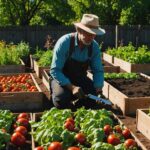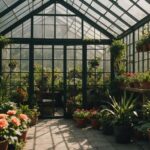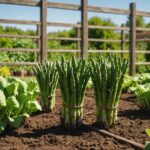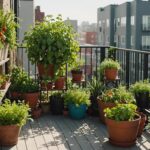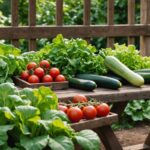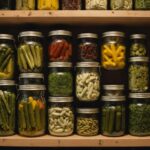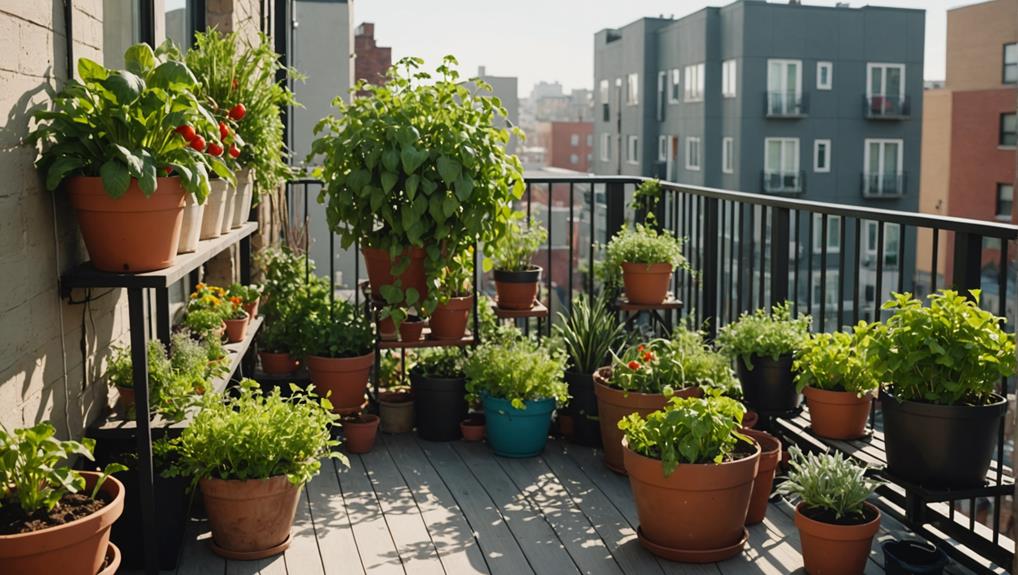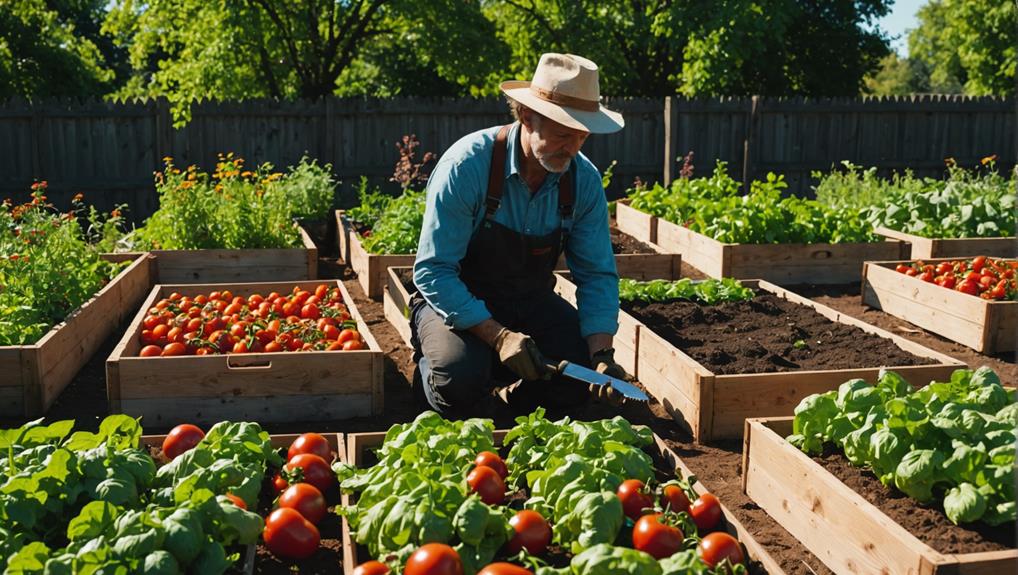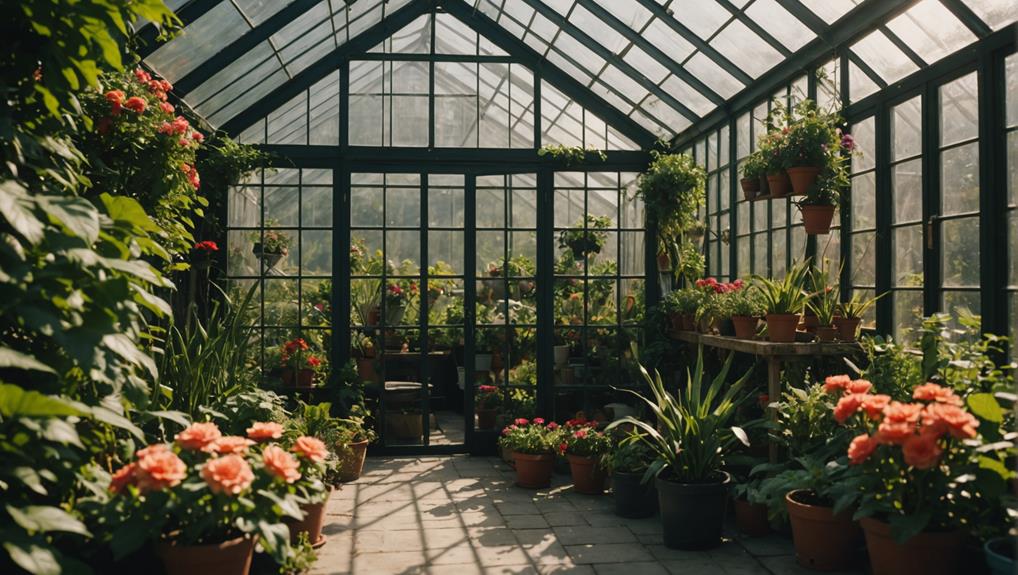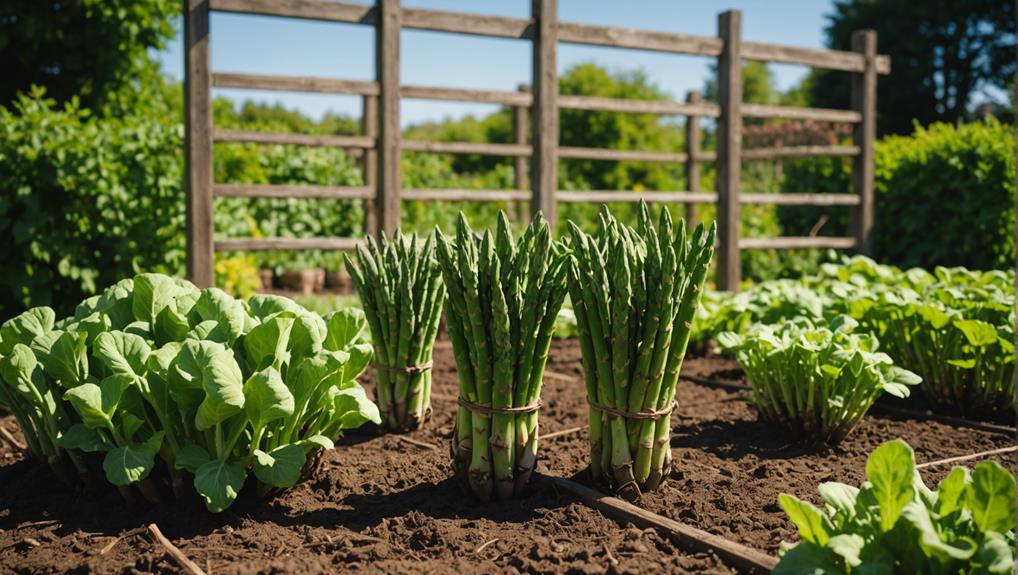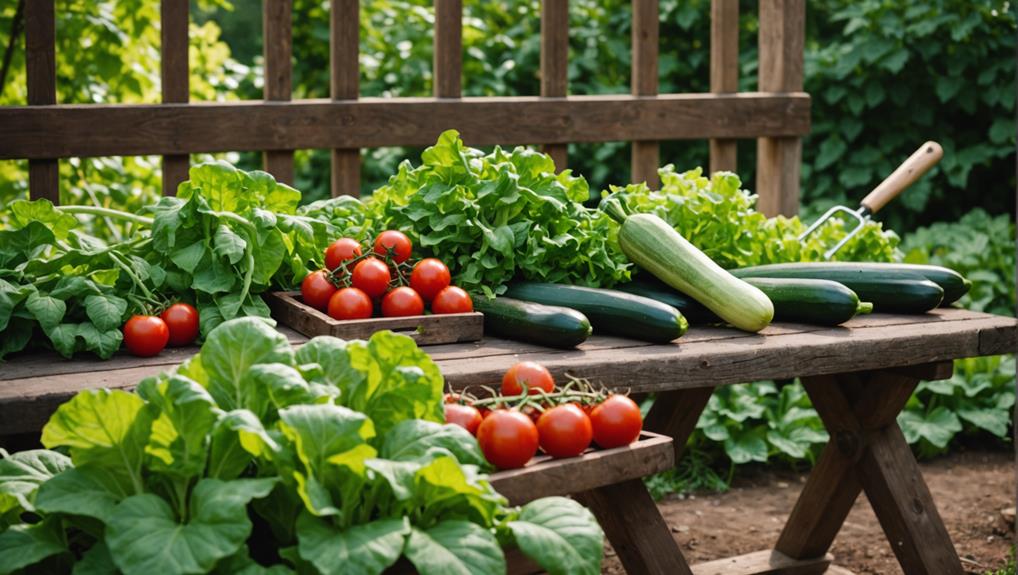As an Amazon Associate I earn from qualifying purchases.
Container gardening is perfect for you as a prepper keen to maximize your food supply in limited spaces. Start with compact vegetables like tomatoes and peppers, and select varied containers like glazed terracotta or breathable grow bags to support healthy root systems. Group your plants based on their water and light needs for easier maintenance. Explore vertical gardening techniques to save space and enhance yield. Don't forget about essential supplies like nutrient-rich potting mix and quality fertilizer to keep your plants thriving. Keep going, and you'll uncover additional tips to optimize your container gardening experience.
Benefits of Container Gardening
Container gardening offers you a practical solution for growing fresh produce in limited spaces like balconies and patios. With this method, you can enjoy the freedom of cultivating your own vegetables, even in the tightest of spots. Potted plants allow you to create a thriving garden that fits your lifestyle. You'll find that certain vegetables grow best in containers, as they can adapt to the controlled environment you provide.
One major advantage of container gardening is the ability to manage water loss effectively. When you use pots, you can monitor moisture levels more easily, ensuring your plants receive the hydration they need without the risk of overwatering. This control leads to healthier roots and stronger plants, ultimately yielding better produce.
Moreover, the flexibility of container gardening means you can move your plants around to maximize sunlight exposure or protect them from harsh weather. It simplifies maintenance, making it easier to tackle pests and diseases while enhancing your outdoor space's aesthetic appeal. So go ahead and embrace container gardening; it's a liberating way to grow your own food, no matter how small your living area may be.
Selecting Suitable Plants
To maximize your container gardening success, it's important to select plants that thrive in limited spaces and provide regular harvests for your meals. Focus on growing vegetables that you love to eat, such as tomatoes, peppers, and lettuce. These choices guarantee you'll enjoy the fruits of your labor.
Dwarf varieties like Butterbush Butternut Squash and Tumbling Tom tomatoes are perfect for your container garden, as they're bred specifically for compact spaces. You can also consider shallow-rooted crops like radishes and greens, which can flourish in smaller containers, maximizing your yields.
Opt for nutrient-dense vegetables that fulfill your dietary needs, like leafy greens for vitamins and beans for protein. Combine these with herbs such as basil and cilantro to elevate your culinary creations while conserving space.
Here's a quick reference table to help you choose:
| Plant Type | Suitability for Container Garden |
|---|---|
| Dwarf Vegetables | Great for limited space |
| Shallow-rooted Crops | Thrive in smaller containers |
| Nutrient-rich Herbs | Enhance meals with minimal space |
Using a quality potting mix will guarantee your plants get the nutrients they need to grow strong and healthy.
Choosing the Right Containers
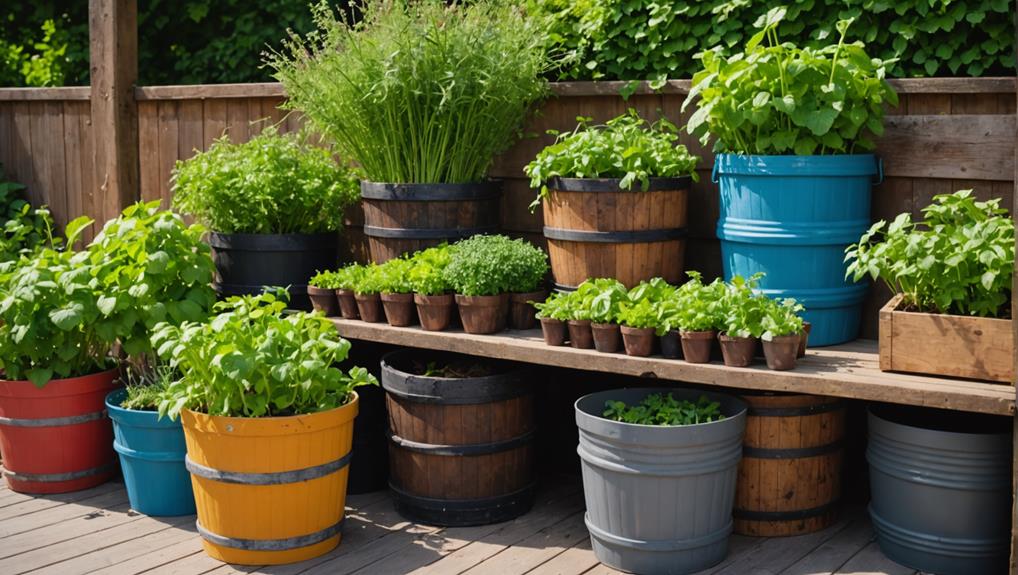
Selecting the right containers is essential for creating a thriving container garden that meets your prepper needs. As you begin this journey, keep in mind the following considerations to guarantee your vegetables need the best environment for growth:
- Material Matters: Opt for glazed terracotta for moisture retention, lightweight plastic for durability, or breathable grow bags to promote ideal root health.
- Size Selection: Choose container sizes based on your plants. For larger plants like tomatoes and potatoes, a 5-gallon pot works well, while smaller varieties can thrive in containers as small as 8 inches deep.
- Drainage Holes: Make certain all your containers have drainage holes. This is vital to prevent waterlogging and maintain healthy root systems, safeguarding against root rot.
- Soil Consideration: Use soil-less potting mixes designed for containers. A good mix consists of 50% compost, 25% coco coir, and 25% drainage materials, providing the right balance for healthy growth.
Essential Gardening Supplies
When you're setting up your container garden, having the right supplies is vital for success. You'll need essential gardening tools, an ideal soil mix, and effective containers to guarantee your plants thrive. Let's explore these necessary items to help you get started on your prepping journey.
Necessary Gardening Tools
Essential gardening supplies for container gardening include gloves, a trowel for planting, and plant markers to track your varieties and planting dates. These necessary gardening tools are vital for creating and maintaining thriving container gardens. To get started, consider adding these key items to your toolkit:
- Gardening Gloves – Protect your hands from dirt and sharp objects while working.
- Trowel – Ideal for digging, planting, and mixing potting soil.
- Plant Markers – Keep track of your vegetable garden varieties and their planting dates.
- Quality Fertilizer – Nutrients are critical since container plants deplete soil faster than traditional gardens.
Investing in lightweight plastic pots can also enhance your gardening experience, as they're easy to move around. Aim for pots that are at least 18 inches deep for vegetables and 8 inches for herbs, ensuring proper root development. Consider optional supplies like mulch to retain moisture and suppress weeds, promoting healthier growth in your container gardens. With the right tools and supplies, you'll be well on your way to enjoying the freedom of growing your own food!
Ideal Soil Mix
To guarantee your container plants thrive, it's important to use a suitable soil mix that supports proper aeration and nutrient retention. A well-balanced blend not only helps your plants grow but also allows you to maintain control over their environment. Here's a simple breakdown of what your suitable soil mix should include:
| Component | Proportion |
|---|---|
| Compost | 50% |
| Coco Coir | 25% |
| Drainage Materials | 25% |
This combination creates a lightweight, moisture-retaining medium perfect for container gardening. Remember, using a soil-less potting mix is essential, as it doesn't weigh your containers down with heavy garden soil. You'll also want to regularly incorporate organic fertilizers to replenish nutrients, since container plants tend to deplete them faster. Additionally, maintaining a slightly acidic to neutral pH (between 6 and 7) will promote ideal plant health and nutrient absorption. Finally, topping off your containers with mulch can help retain water, regulate temperature, and suppress pesky weeds. Embrace this suitable soil mix, and watch your container garden flourish!
Effective Container Selection
Choosing the right containers is crucial for successful container gardening, as they directly impact your plants' growth and health. Effective container selection starts with understanding your needs and the specific requirements of your plants.
Here are some key considerations when selecting containers:
- Depth: Choose containers at least 18 inches deep for vegetables and 8 inches for herbs. This guarantees adequate root space and moisture retention.
- Material: Opt for lightweight plastic pots over heavier materials for easier mobility, especially in small or urban spaces. They're easier to rearrange as needed.
- Drainage: Confirm all containers have proper drainage holes. This prevents waterlogging and root rot, both critical for plant health.
- Soil Mix: Select soil-less potting mixes designed for container gardening. A mix of 50% compost, 25% coco coir, and 25% drainage materials enhances aeration and moisture retention.
Effective Planting Techniques
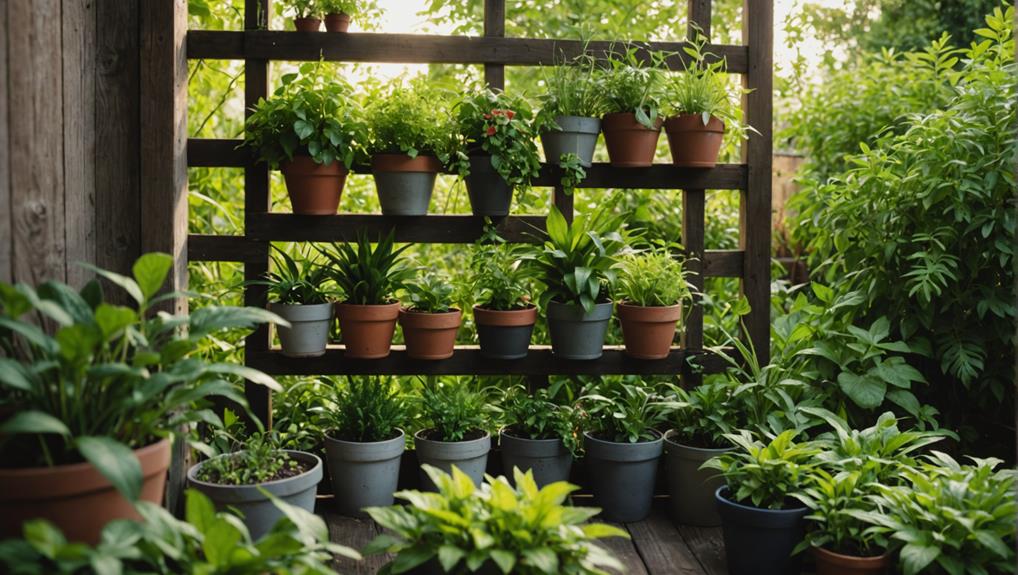
When you start planting in containers, it's essential to take into account effective methods for getting the best results. You can explore seed starting techniques, the benefits of companion planting, and seasonal strategies to maximize your yields. Let's look at how these approaches can enhance your container gardening experience.
Seed Starting Methods
Effective seed starting methods are crucial for ensuring your plants thrive and yield a successful harvest. To get your container garden off to the best start, follow these essential techniques:
- Start Indoors: Begin seeds indoors 6-8 weeks before the last frost date using small containers or seed trays filled with a nutrient-rich potting mix. This gives your plants a strong foundation.
- Maintain Soil Temperature: Keep soil temperatures between 65°F and 75°F. Many seeds need warmth to sprout effectively, so monitor this closely.
- Light Requirements: Provide your seedlings with 12-16 hours of light daily. Use grow lights or place them in south-facing windows to avoid leggy growth and strengthen their stems.
- Watering Technique: Use a spray bottle or bottom watering method to maintain consistent moisture without waterlogging the soil, which can lead to root rot.
Once your seedlings develop their first true leaves, remember to thin them out. This prevents overcrowding, ensuring that the remaining plants have ample space and resources to grow vigorously. By mastering these seed starting methods, you're setting the stage for a bountiful harvest.
Companion Planting Benefits
Companion planting can greatly boost your garden's productivity and pest resistance by pairing plants that naturally support and enhance each other's growth. For instance, planting marigolds alongside tomatoes can help deter harmful nematodes, while basil can elevate the flavor and growth of your tomatoes. These strategic combinations not only maximize space but also cultivate a thriving ecosystem.
Consider the 'Three Sisters' method, where beans, corn, and squash grow together. This trio optimizes your container garden, allowing each plant to provide essential support for the others, ultimately enhancing your yield of fruits and vegetables. Additionally, incorporating plants like garlic or chives near carrots can repel pests such as aphids and carrot flies, reducing your reliance on chemical solutions.
Seasonal Planting Strategies
How can you optimize your container garden by planting at the right times based on seasonal changes? Understanding seasonal planting strategies is key to maximizing your yields and ensuring that your garden thrives. Here are some effective techniques to contemplate:
- Timing is Everything: Start cool-season crops like lettuce and peas in early spring, while warm-season crops such as tomatoes and peppers should be planted once soil temperatures exceed 60°F.
- Staggered Planting: To enjoy continuous harvests, stagger your planting schedules. This means planting crops like beans and cucumbers at intervals throughout the season.
- Embrace Companion Planting: Utilize methods like the 3 Sisters Garden, combining corn, beans, and squash. This technique not only saves space but also enhances growth through mutually beneficial plant relationships.
- Rotate Your Crops: Incorporate seasonal crop rotation to maintain soil health and deter pests. This practice fosters resilience in your container garden.
Maintenance and Care
Proper maintenance and care of your container garden guarantees healthy plants and a bountiful harvest. To achieve this, you need to water daily, especially during hot weather. Container plants dry out faster than those in garden beds, so regularly monitor soil moisture to ascertain they're well-hydrated. Watering at soil level helps prevent pests and diseases, and consider using mulch to retain moisture and suppress weeds.
Keep an eye on your plants for any signs of pests and diseases. A vigilant approach allows for timely intervention, keeping your garden thriving. Pruning might be necessary to enhance air circulation, promote healthy growth, and prevent overcrowding in your containers.
Seasonal adjustments are essential, too. Relocate your containers as needed to protect them from harsh weather or provide insulation during extreme conditions. These strategies will help maintain plant health throughout the year, allowing you to enjoy the fruits of your labor. With a little effort in maintenance, you'll be well on your way to cultivating a resilient and productive container garden that supports your self-sufficient lifestyle.
Vertical Gardening Strategies
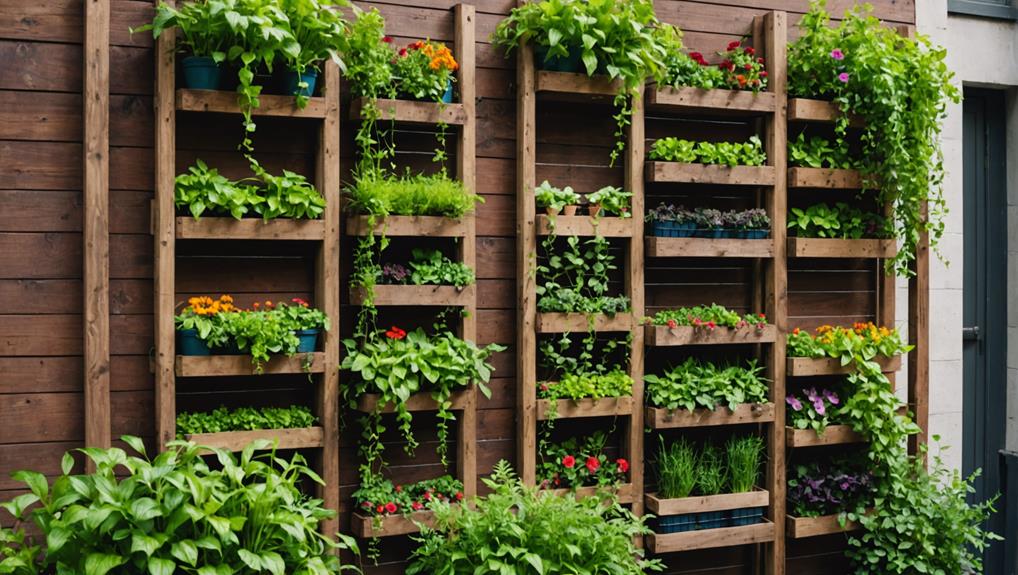
Vertical gardening transforms limited spaces into thriving green areas, allowing you to grow a variety of plants efficiently. This technique is perfect for preppers looking to maximize their yield in small areas. Here are some effective vertical gardening strategies to keep in mind:
- Utilize Trellises: Support climbing plants like beans and peas by installing trellises against walls or fences, making the most of vertical space.
- Create DIY Planters: Use recycled materials to craft vertical planters. This not only enhances aesthetics but also boosts productivity without extra cost.
- Incorporate Hanging Baskets: Hang baskets for herbs and smaller plants. This setup guarantees easy access while providing ideal sunlight exposure.
- Use Climbing Plant Clips: Secure climbing plants with fixture clips that don't require drilling. This allows you to adapt and rearrange your garden effortlessly.
Layout Ideas for Preppers
Exploring various layout ideas can greatly enhance your container gardening efforts, ensuring you maximize space and yield in your prepper garden. One effective method is container grouping. By arranging your plants with similar water and sunlight needs together, you simplify your watering routines and create microclimates that can boost growth.
Another option is Square Foot Gardening, where you organize your containers into a grid. This method not only optimizes space but also allows you to grow a diverse range of crops without overcrowding. For smaller areas, consider Vertical Gardening. Utilizing trellises and wall-mounted planters can help you grow climbing plants, effectively increasing your garden's footprint.
If you're in a hotter climate, Keyhole Gardens can be a game-changer. They combine composting and easy access to your plants while maximizing water efficiency. Ultimately, intercropping—planting complementary crops together—can enhance growth and fend off pests, ensuring your garden thrives. The best part of these layouts is that they empower you to grow in containers, making the most of your space while ensuring you meet your self-sufficiency goals.
Nutritional Considerations for Survival
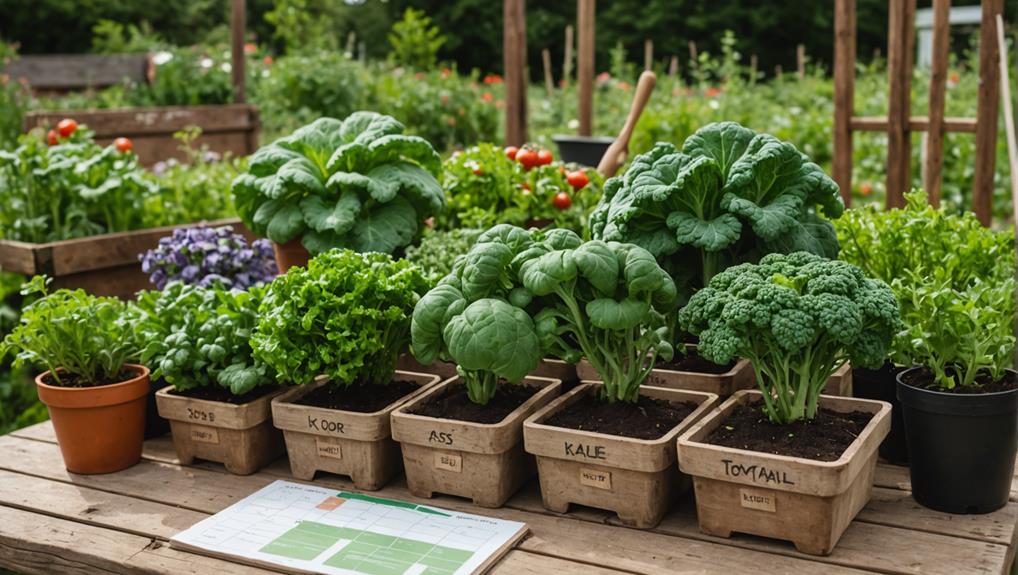
Prioritizing nutrient-dense vegetables in your survival garden can make a significant difference in your overall health and energy during emergencies. When planning your container garden, keep these nutritional considerations in mind:
- Leafy Greens: Grow spinach and chard for essential vitamins A, C, and K, along with minerals like iron and calcium.
- Green Beans: These provide a good source of protein and fiber, helping you stay full and energized.
- Diverse Crop Selection: Incorporate a variety of crops, such as garlic and broccoli, to guarantee you're getting a wide range of vitamins and antioxidants that support your immune system.
- Nut Trees: If space allows, consider nut trees like hazelnuts and walnuts for healthy fats and protein, vital for sustained energy.
Frequently Asked Questions
How Do You Layout a Container Garden?
To layout your container garden, focus on plant spacing for air circulation, choose quality soil, apply efficient watering techniques, and implement pest management strategies. This guarantees healthy plants and maximizes your freedom to grow successfully.
Which Shape of Container Works the Best for Container Gardening?
When choosing a container shape, round containers offer even soil distribution, while rectangular planters optimize space. Consider vertical gardening and hanging baskets for added freedom, maximizing your planting options without sacrificing your available area.
What Is the Best Garden for Emergency Preparedness?
For emergency preparedness, grow emergency crops and survival herbs. Use food preservation techniques to guarantee long-lasting supplies. Focus on self-sufficiency strategies that empower you to thrive independently, securing your freedom and nutritional needs in challenging times.
What Is a Disadvantage to Container Gardening?
One disadvantage of container gardening is space limitations. You'll face challenges with soil retention and water management, making it tougher to maintain healthy plants. Plus, pest control can become more complicated in confined environments.
Conclusion
Incorporating container gardening into your prepping strategy can greatly boost your food security. By selecting the right plants and containers, you can create a thriving garden that's easy to manage. Don't forget to maintain your plants and consider vertical options to maximize space. With thoughtful layouts and attention to nutritional needs, you're well on your way to building a sustainable food source. Start your container garden today and take a proactive step toward self-sufficiency!
As an Amazon Associate I earn from qualifying purchases.
